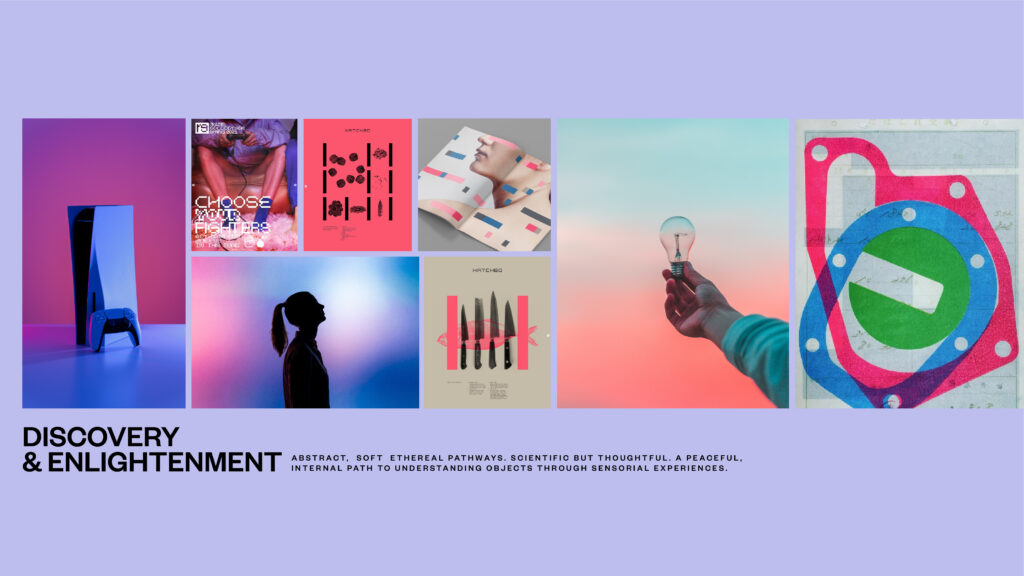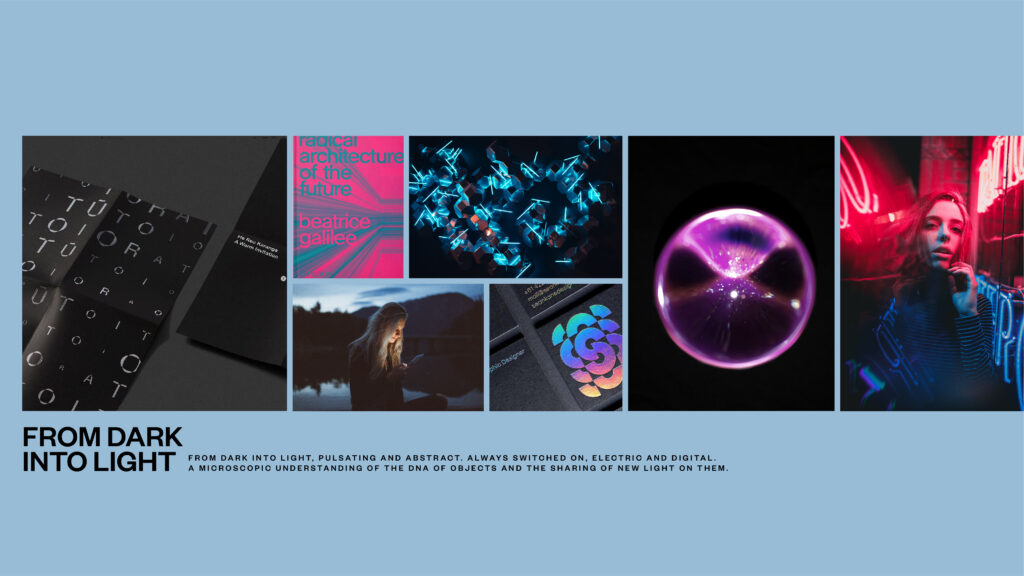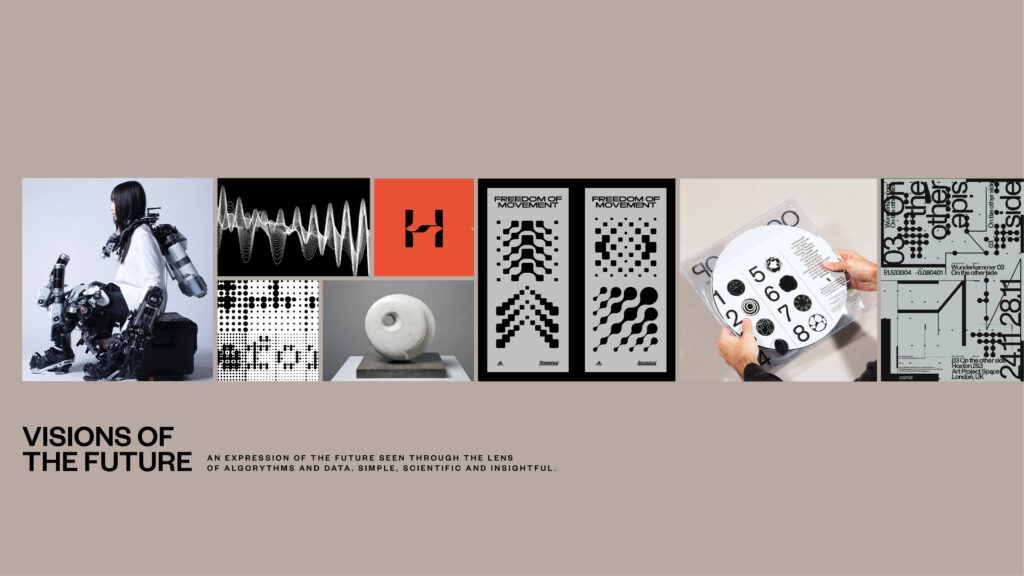Mapping emergent themes, moods and stories
REFLECTIONS ON LECTURES AND SOURCE MATERIAL
...
LECTURE
How do themes and trend forecasts help to ensure a project is planned and positioned effectively to deliver its strategic goals?
While the majority of the lecturers agree that trends are useful for preparing for the future, Stijn van de Ven of Eden Spiekermann asserts that by following them you can come up with generative design. I think as Martin Raymond later asserts, trends are not rooted in fashion and it it this misconception that Stijn seems to be referring to. Luke Veerman on the other hand (also of Eden Spiekermann) thinks that they are a reflection of the evolving world and you need to be aware of the changes to be able to adapt.
Both A+P and Veerman agree that, should you choose to use and follow a particular trend, there should be inbuilt flexibility to be able to adapt and grow your project over time. This is due to the length of any given project from concept to realisation, it's life cycle in the market taking into consideration any budgetary or legal issues that you may encounter along the process.
Most, if not all the lecturers focus on the area of technological innovation as being a driving factor in modern trends and I would agree that this is one key areas in societal change and evolution.
...
RESOURCES
Dezeen/Soft Futures Lecture: How will tech change lives in the next 20 years?
"We only understand technology when we cease to notice it"
Martin Heidegger
—
For me the quote from Heidegger seemed to summarise the lecture, encapsulating the idea of 'where we are now' and 'where we aim to be' in the future. Martin Raymond breaks this down into three Era's; ones that exist, are evolving and will become 'normal' in the future. 'The age of distraction' where we currently are is us still noticing and interacting with the technology to the point of immobility. The age of immersion is where we embrace change and immerse ourselves in technological and virtual worlds – I think this is already starting to take shape with more prevalent use of VR technologies. The age of absorption is where the technology becomes part of us. This is also starting to evolve with chip technology sending electric impulses from the brain to parts of the body in victims of paralysis or the more cosmetic approach of having digital passes implanted for opening doors, starting cars etc. This is essentially bionics becoming real.
Ivy Ross asserts that we always need to keep in check the kind of technology we are creating, with humanity at its core. 'Amplifying humanity through our senses'. While Lee Abelcourt want's to take this a step further in becoming fully telepathic. She talks about this as if it is already happening with an example of thinking about a person and immediately they text you, but I think this is confused with pure coincidence. Although I could see telepathy happening with chip implant technology.
Ivy Ross is on a mission to realise Heidegger's insight in making technology for the home invisible and less' functional' looking, a trend which started with Apple's 'Think Differently' campaign back in the 90's and the launch of the iMac. This where the role of design plays a huge part in how we let technology into our lives and how we interact with it. Lee Abelcourt also touches on our need for a sense of renewal. I think this is linked to two things. The first being always 'on' lifestyles caused by technology created, the second being our mental and spiritual wellbeing. Although I would argue that the second is also a result of the decline in faith and religious instititutions.
Ivy is looking to create sensorial aesthetic beauty, function and comfort in the way we interact with technology in the home and perhaps this integrated, subtle approach brings harmony into our lives in a way that we can continue being 'human'. An almost spiritual connection to technology. The future Martin and Lee touch on where technology is part of the human soul has its own set of problems and feels more alien, but it is already here.
TAKE OUTS
— There are a few trends that are currently relevant: Well Being, Tactile Technology, Food Fashion, Togetherness (Alone Together), Body & Soul (New Enlightenment).
— New technology should be human, have aesthetic (ergonomic) beauty, be tactile and most importantly functional for it to be integrated in our lives.
— We should always ask: 'What kind of future are we creating?'
...
Martin Raymond/The Trend Forecaster's Handbook
In Martin's book he asserts that trends are not just fashion or a passing fad, they are forecasts that predict long term changes and the effect this trend or 'change' can have on culture, society and business. They map why a person is drawn to one thing over another and follow the direction in which something new or different moves. This understanding of what drives or motivates us as people is usually driven by innovation or forecasts of where we will be heading in the future and helps innovators shape what this future will look like and how it will function. Drawing on visual culture, science, technology, media ethnography, writing, colour theory and emerging technologies; a picture of the future can be created through quantitive and qualitative research. Although as a speculative process, intuition also plays a large part in deciding the validity of a trend and whether it is flexible enough to grow and evolve over time. In forecasting; the emotional, physical and psychological landscape also has to be considered. How will the new impact on the way we live tomorrow?
Fundamentally, it is all about the validity of your source material, the questions asked and who you choose to collaborate with, which the book covers in quite some detail.
TAKE OUTS: ON CREATING A QUESTIONNAIRE
— Questions should be conversational and open ended.
— Limit the number of questions you ask.
— Make points that will lead to new areas of research
— Use statements that will validate your research: I.E: Which of the following do you agree with? (A,B,C)...
—Ttarget the question at the right group (Innovators/Audience).
— Provide optional answers to your questions.
— Use visual prompts to ask questions.
TAKE OUTS: ON BUILDING A NETWORK
— Build up connections with people outside of your industry (Technologists, Researchers, Scientists, Artists, Writers, Philosophers and Creative Upstarts).
— Join groups where you can gain specialised knowledge.
— Network in person (Events).
— Use social media and blogs to publish your research. Keep it informative, informal, accessible and welcoming.
— Stay connected.
TAKE OUTS: ON EMPATHY
— Learn to listen.
— Keep and open mind and listen without challenge or objection.
— Speak the same language (shows you are listening).
TAKE OUTS: ON TREND FORECASTING
—Ask 'What if, what's new, next?' (Social, Ethical, Moral, Economical, Environmental).
— Ask 'What will this look like?'.
— Research: Quantitative and Qualitative.
— Think intuitively.
— Once a trend has been identified and its end user it can be presented to a client to become a 'thing'. (IDEATION).
TAKE OUTS: ON RESEARCH
— Interview key stakeholders: CEO, Market Researchers, Strategists, Planning, Consumer Insights, Sales, Brand Managers, Design Team/Visualisers, Trend Forecasters, Workshop Facilitators. (Experts provide context/insights).
— Do desk research on sector trends.
TAKE OUTS: SUMMARY
— Identify key trends within a sector.
— Outline the key drivers of these trends.
— Identify the innovators and early adopters.
— Identify brands, products and services following these trends.
— Outline how the trend's will impact a clients brand and route to market.
— Produce a trend report for the key stakeholders.
— Hold a workshop to tease out areas of concern.
— The results of the workshop will be presented to the design team for concept creation.
—
Workshop Challenge
Research current themes, trends and moods relevant to your project requirements and goals. Post your findings on the Ideas Wall and evaluate your research in your blog.
TREND REPORT
In reading Future Laboratory's predictions for 2021 and beyond there were a few trends that stood out as being relevant and will aid in building my strategy for the design framework of my Science Museum Group project. In the aftermath of global lockdown the digital, cultural, and educational landscape has dramatically altered, and the way 'Next Generation' and millennials interact with the world today has changed.
As brands such as Facebook start to embrace this concept of the metaverse; virtual spaces where we live, socialise and work using virtually enhanced technologies, the trends report shows us that 'Next Generation' and millennials are already inhabiting these spaces using augmented reality and gaming to fuel their activism and lifestyle choices. So how can this technology be used to create remote, immersive experiences for the Science Museum Group? What is important to our target audience and what is not?
I have produced an online survey for the target audience to respond to here in Ireland, which will hopefully answer some of these questions. Interestingly, the Future Labs report outlines: 'According to the Global Web Index, worldwide increases in time spent streaming (27%), on messaging platforms (22%) and gaming (18%) have occurred as a result of Covid-19, as our daily activities become screen-based. Yet, while screen time has increased, many people wish to counter the rising demands of their online existence.'
So the question is - are these interactive online experiences creating a positive response from our target audience? Many brands are starting to understand that consumers want deeper emotional connections and are introducing ways of allowing the audience to participate or own a brands direction. For example, AirBnB allowed social media influencers to take over their Snapchat soon after they launched on the platform (Source: https://www.coredna.com/blogs/digital-customer-experience-trends). For the Science Museum Group this would be a great way to open up the conversation about their object archive using high profile celebrities, innovators and educators with a love of all things science and create a 'real' connected social experience. From another perspective, V&A's recent BBC series 'Secrets of the Museum' has gone a long way in bringing the collection to the public during covid and explores in depth the conservation process of the objects within, all using analogue methods. So a combination of both the online and offline experience cannot be underestimated.
Innovations in the technological sectors continue to evolve on a daily basis, but it is how you gain traction and keep momentum that counts. In the Future Labs report cosmetics brand Morphe are utilising retail spaces with lighting, videography and make-up for individuals to create their own online profiles and stories. This idea of immersive content creation is interesting in the SMG context as you could effectively bring the museum to your audience with metaverse based pop-ups and create social connection and online presence through active participation. Not everyone has access to VR so this introduces a way to connect both with the technology and the museum itself.
According to the Future Labs report 'gaming platforms are becoming therapeutic third spaces providing escapism through play'. It is this immersive content creation that will build what are (According to Core DNA's website) Habit loops? 'What is a habit loop? It’s the neurological loop that’s responsible for a habit. There are three components: cue, routine, and reward.' (Source: https://www.coredna.com/blogs/digital-customer-experience-trends). In the context of the SMG this could take many forms, but perhaps gaming could be utilised in some way for educational, interactive, enjoyment and reward purposes'. I have asked my online survey group if they would engage with the idea of an online escape room experience as I think this would be a great way of grouping objects together and creating a narrative - with the reward of solving a puzzle at the end, but maybe this is something that would interest the younger audience (16-20) rather than the older (20-30) audiences.
Social presence is also key. Many institutions are conducting private view/tours, webinars, open mic discussions, podcasts, stories and posts and this will need to be embraced by the museums stakeholders to further create the "buzz" about what is new and happening.
Another area of my research has brought something to the fore that I didn't expect but is pertinent to the success of any archive. How much of an environmental impact is your website having? According to the Future Labs report 'The average single webpage size is now 3.48Mb – more than 24 times the size it was in 2003 (source: Serving Green). With a proposed archive of 425,000 objects to view, what are the SMG going to put in place to offset any of their carbon emissions? After an initial scan of their search engines I found a lot of the content searches brought up objects that had minor points of difference. While I feel it is right for the SMG to document their database for researchers I do not believe all of this information needs to be presented online and in the light of this research, would recommend that it is kept to one of each object type and to the bare minimum.
...
Distill your research, write a positioning statement for your project strategy and post it in your blog.
DISTILLING MY RESEARCH
In Exploring the V&A, Cooper Hewitt Archives and looking at future trends for 2021 and beyond I have adjusted my view to focus less on the content of the archive and the information found within; and more on the way people will find, interact and share their learned experience. From a functional point of view the information contained within the 'walls' of the online archive should be easy to understand, and the UX should be a simple and as engaging as possible.
After my discovery of the carbon emissions produced by websites I will propose a less is more approach to the amount of content presented to the public. This is also a reaction to my own feeling that there are many repetitions in the current archive, which has a negative effect on the exploratory experience. I also believe that the archive cannot survive as a static thing and must diversify its offering across multiple channels to maintain visibility, relevance and a renewed sense of purpose.
The archive should become a living, breathing organism that is a constant source of enlightenment and surprise. I intend to do this by drawing on a multitude of technologies such as: VR, 3D, Touchscreen, Augmented Reality as well as drawing on more analogue approaches such as pop-up's and film and television. This will result in a series of speculative proposals and build a bigger experience for framing the SMG archive.
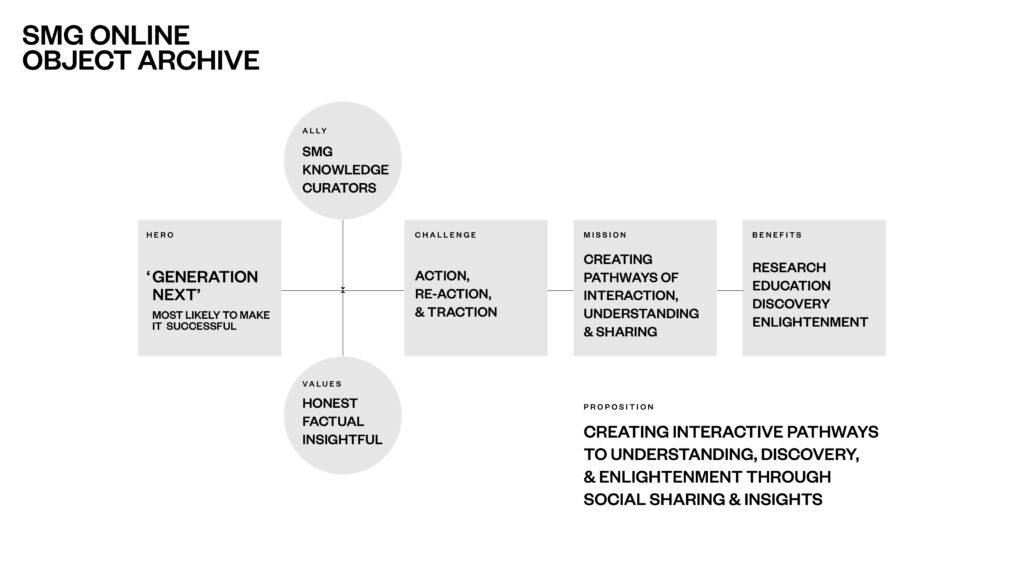
...
Imagine three mood boards to contextualise your positioning statement and post them on your blog. Select one mood board and upload it to the Ideas Wall to gain peer feedback.
BELOW: This is not a mood board but an overview of some of the technologies I wish to employ for the project.
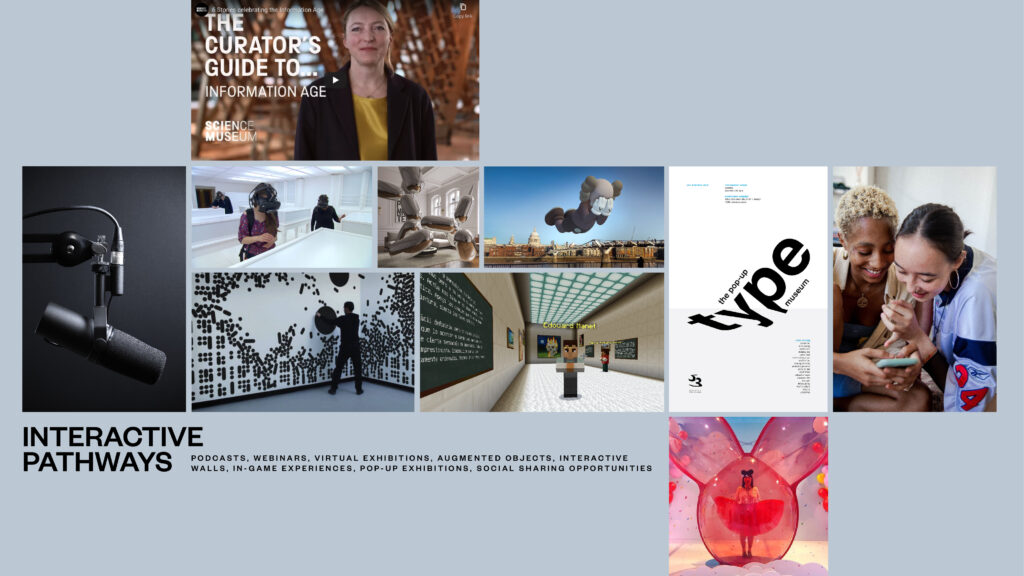
BELOW: Three mood board expressions of my 'Proposition or Positioning Statement'.
